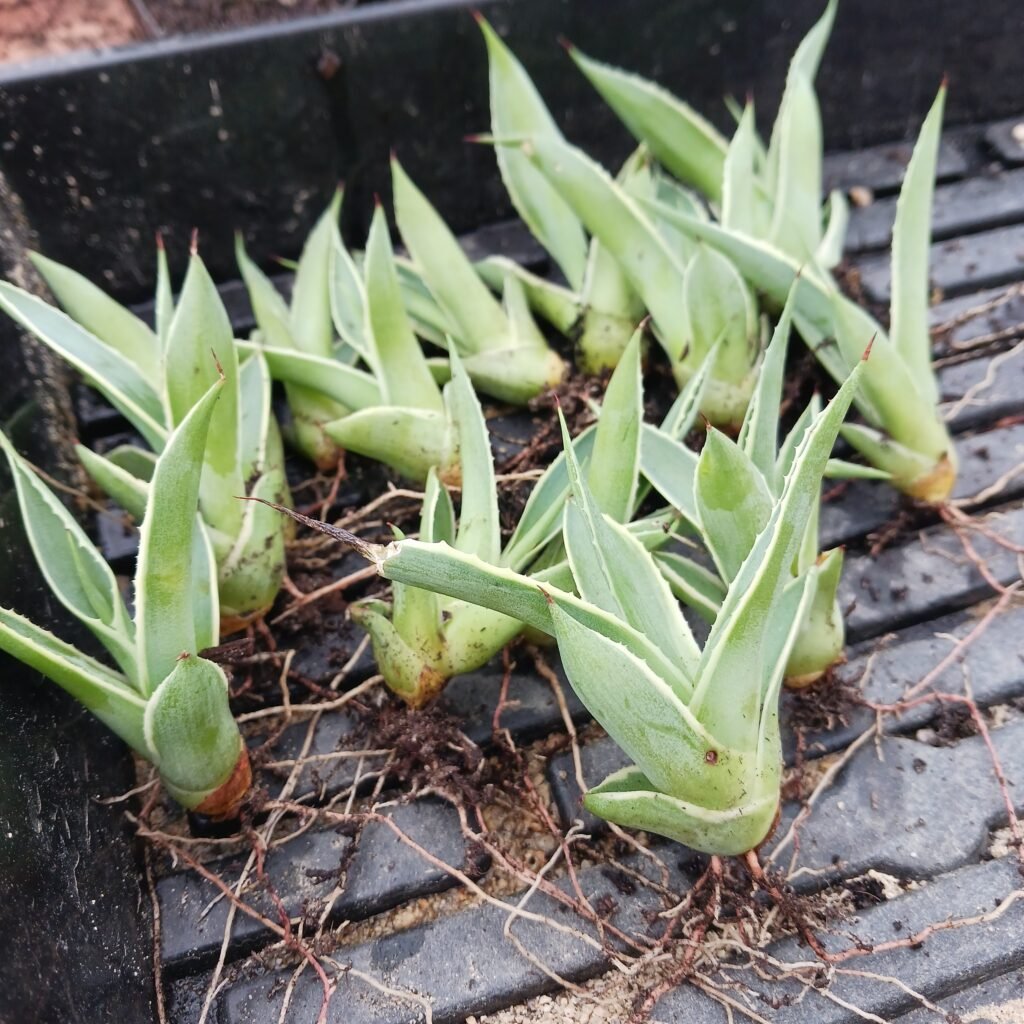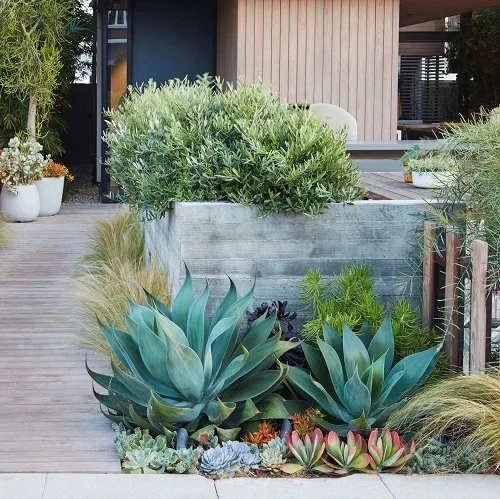Agave Plants are striking succulent plants with bold, architectural forms. Learn how to grow these low-maintenance landscape gems and get variety recommendations and design ideas.
Agave Plants are succulent plants native to the hot, arid regions of the Americas, primarily Mexico. They form striking, large rosettes of thick, fleshy leaves that can reach several feet across. The leaves have a bold geometric shape with sharp tips and are often lined with wicked-looking teeth or spines along the edges.
Here’s a concise information chart about Agave plants:
| Attribute | Information |
|---|---|
| Botanical Name | Agave spp. |
| Plant Type | Succulent perennial |
| Zones | 8-11 (varies by species) |
| Exposure | Full sun to partial shade |
| Height/Spread | Height: 1-10 feet Spread: 2-10 feet |
What are Agave Plants?

Many agave varieties start off fairly compact when young, expanding into huge rosettes several feet tall and wide over time. Their growth rate is relatively slow but vigorous enough to quickly establish.
While their leaves have interesting colors and patterns, it’s the overall bold form and symmetry of the rosettes that really draws attention. Some types remain solitary while others offset readily to colonize an area.
Most agaves only bloom once after many years with a dramatic and showy flower spike that towers overhead, sometimes over 20 feet tall! After flowering, the plant dies but leaves behind plenty of offspring or “pups”.
Benefits of Growing Agave Plants

Agaves make excellent accent or specimen plants for landscaping in hot, sunny parts of the country due to their:
- Drought tolerance once established
- Low maintenance requirements
- Bold, eye-catching shapes and forms
- Striking leaf colors like gray, blue, yellow and red
- Evergreen nature and year-round interest
- Ability to thrive in poor, well-drained soils
- Very few pest or disease issues
While many have large, formidable spines, there are also plenty of spineless varieties perfect for family gardens and spaces with heavy foot traffic.
Smaller types can even be grown in containers for patios and pool areas. Overall, agaves are some of the toughest, most durable and low-maintenance landscape plants around.
Growing and Caring for Agave Plants
Site Selection and Soil Prepration

When growing agaves, choosing an appropriate planting location is crucial. They need full, direct sunlight with at least 6 hours of hot sun exposure per day. The hotter and sunnier the better to achieve their signature colors and forms.
Well-drained soil is also essential. Agaves will rapidly rot in wet, poorly-drained areas. Amend heavy clay soils deeply with compost, small gravel or crushed granite to improve drainage. Slopes and raised beds provide ideal planting sites.
Most agave varieties are also tolerant of poor, infertile and salty soils as long as drainage is excellent. A basic cactus or succulent potting mix works well too.
For best growth and to prevent overcrowding, space large agaves 6-10 feet apart. Small to medium-sized types can be planted 3-5 feet apart.
Ongoing Care and Maintenance

Once established, agaves are extremely drought-tolerant and require little supplemental watering. Let the soil dry out completely between deep waterings during the growing season, providing more frequent irrigation that first year.
In their native hot, arid climates, rainfall is the only moisture source most agaves receive. Potted plants dry out faster and need more frequent watering when small.
While mature agaves are cold hardy down into the teens, providing some protection over winter like dry mulch around the base prevents cold, wet conditions during dormancy that can cause rot.
These plants get by just fine without any fertilizer when grown in the ground. For containers, use a balanced, controlled-release fertilizer at half-strength at the start of the growing season if desired.
To prevent overcrowding and retain their bold visual impact, it’s best to remove small offsets or “pups” annually unless you want your agave to fill in an area.
Varieties of Agave to Grow

With over 200 species, there’s an incredible diversity in size, form, color and cold-hardiness within the agave family. Here are some popular types to consider:
Agave americana – The classic huge agave most recognize with gray/blue leaves and vicious spines, growing 6-10 ft tall and wide when mature. Variegated and spineless forms exist.
Agave desmettiana – Small 2-3 ft rosettes of soft triangular foxtail-shaped leaves that resemble living sculptures. Suitable for containers.
Agave parviflora – Native to Arizona and tough as nails, these 2-3 ft rosettes have curved green/gray leaves with distinctive red spines.
Agave tequilana – The famed “tequila agave” used to produce the spirit. Forms striking 5-6 ft powder blue rosettes.
Agave victoriae-reginae – A small, solitary rosette growing only 1-2 ft wide with elegant white markings and sharp terminal spines. A real conversation piece!
Agave weberi – A sprawling, mounding groundcover agave with a 5-6 ft wide spread and nearly spineless soft blue/gray leaves.
Design Ideas for Agaves

Given their bold forms and textures, striking colors, and resilience, agaves make perfect focal points for desert-inspired landscapes or xeriscape gardens. Use them to:
- Create eye-catching accents and anchors in garden beds and borders
- Flank entryways or corners of the yard for a dramatic touch
- Mix into rock gardens along with boulders and other succulents like yuccas
- Establish a visual barrier or living fence by planting in groups
- Incorporate into low-maintenance hellstrips or parking medians
- Brighten up courtyards, patios and pool areas as container specimens
- Underscore modern, minimalist gardens by balancing structural plant forms
While certainly sharp and pokey, there are many spineless agave varieties suitable for family areas and spaces with high foot traffic. Appropriate siting and spacing is still important to avoid injuries.
With the right agave placed in the perfect spot, these low-maintenance succulents are sure to be a bold centerpiece and conversation starter for years to come!
Pingback: - Aloe Plants: Comprehensive Guide to Growing Aloes
Pingback: Mangaves: How to Grow Magnificent Agave Hybrids Successfully
Pingback: Unveiling the Enigmatic Black Rose: A Comprehensive Guide -
Pingback: How to Grow and Care for Areca Palms - Gardener's School
Pingback: Chili Plants: The Ultimate Guide to Growing Them -
Pingback: Ctenanthe : A Comprehensive Guide to Growing and Caring
Pingback: Mangaves : How to Grow Magnificent Agave Hybrids Successfully